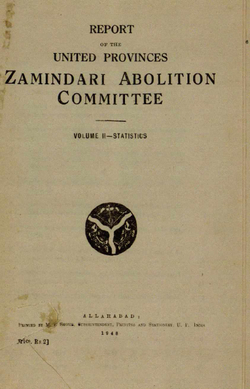The 1948 Report of the United Provinces Zamindari Abolition Committee offers a comprehensive examination of the zamindari system and proposes its abolition in the United Provinces (present-day Uttar Pradesh, India). The two-volume report delves into the legal, administrative, and statistical aspects of this critical agrarian reform.
Volume II delves into the statistical underpinnings of the report. It provides a granular analysis of the zamindari system, offering crucial data for informed decision-making. The volume classifies zamindars based on the land revenue they paid, presenting tables and graphs to illustrate the distribution of landholdings and revenue generation across different landowner categories.
Furthermore, Volume II offers a detailed analysis of landholdings, including the size and distribution of "sir" (self-cultivated) and "khudkasht" (tenant-cultivated) holdings. By examining the number of holdings and their respective areas, the report exposes the existing disparity in land distribution.
Statistical data on agricultural practices forms another vital component of Volume II. It provides insights into the scale of farming operations by including data on farms exceeding 50 acres. This data sheds light on the extent of mechanization and overall agricultural productivity in the region.
The report recognizes the importance of demographic data for assessing the reform's socio-economic impact. Volume II includes details on individuals holding various land interests, such as under-proprietors, sub-proprietors, and mortgagees. This data proves crucial for understanding the potential ramifications of the proposed reforms on different segments of the rural population.
Finally, the report features a district-wise analysis of land revenue and landholding patterns. This granular examination provides valuable insights into regional variations within the United Provinces. By understanding these variations, policymakers can tailor the reform measures to specific local conditions, ensuring a more effective implementation process.
The 1948 Report of the United Provinces Zamindari Abolition Committee, stands as a landmark document in India's agrarian history. The report's comprehensive analysis, combining historical context, legislative proposals, and extensive statistical data, provides a compelling case for abolishing the zamindari system. The proposed reforms aim to create a more equitable land distribution system, enhance agricultural productivity, and empower tenant farmers, ultimately contributing to the socio-economic development of rural India.


